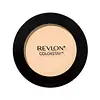What's inside
What's inside
 Key Ingredients
Key Ingredients

 Benefits
Benefits

 Concerns
Concerns

 Ingredients Side-by-side
Ingredients Side-by-side

Talc
AbrasiveMica
Cosmetic ColorantDimethicone
EmollientZinc Stearate
Cosmetic ColorantOctyldodecyl Neopentanoate
EmollientNylon-12
Phenoxyethanol
PreservativeMethyl Methacrylate Crosspolymer
Synthetic Fluorphlogopite
Ethylhexylglycerin
Skin ConditioningSorbic Acid
PreservativeAdipic Acid/Neopentyl Glycol Crosspolymer
Methicone
EmollientPEG-4 Diheptanoate
EmulsifyingLauroyl Lysine
Skin ConditioningDimethiconol
EmollientTriethoxycaprylylsilane
Pentaerythrityl Tetraethylhexanoate
EmollientHydrogenated Lecithin
EmulsifyingSilica
AbrasiveTocopheryl Acetate
AntioxidantMacrocystis Pyrifera Extract
Skin ConditioningHydrolyzed Rice Protein
Skin ConditioningPrunus Amygdalus Dulcis Seed Extract
Skin ConditioningLaminaria Japonica Extract
Skin ProtectingNereocystis Luetkeana Extract
Skin ConditioningSaccharomyces/Magnesium Ferment
Saccharomyces/Potassium Ferment
Skin ConditioningTocopherol
AntioxidantLecithin
EmollientCI 77491
Cosmetic ColorantCI 77492
Cosmetic ColorantCI 77499
Cosmetic ColorantCI 77891
Cosmetic ColorantTalc, Mica, Dimethicone, Zinc Stearate, Octyldodecyl Neopentanoate, Nylon-12, Phenoxyethanol, Methyl Methacrylate Crosspolymer, Synthetic Fluorphlogopite, Ethylhexylglycerin, Sorbic Acid, Adipic Acid/Neopentyl Glycol Crosspolymer, Methicone, PEG-4 Diheptanoate, Lauroyl Lysine, Dimethiconol, Triethoxycaprylylsilane, Pentaerythrityl Tetraethylhexanoate, Hydrogenated Lecithin, Silica, Tocopheryl Acetate, Macrocystis Pyrifera Extract, Hydrolyzed Rice Protein, Prunus Amygdalus Dulcis Seed Extract, Laminaria Japonica Extract, Nereocystis Luetkeana Extract, Saccharomyces/Magnesium Ferment, Saccharomyces/Potassium Ferment, Tocopherol, Lecithin, CI 77491, CI 77492, CI 77499, CI 77891
Ingredients Explained
These ingredients are found in both products.
Ingredients higher up in an ingredient list are typically present in a larger amount.
Ci 77891 is a white pigment from Titanium dioxide. It is naturally found in minerals such as rutile and ilmenite.
It's main function is to add a white color to cosmetics. It can also be mixed with other colors to create different shades.
Ci 77891 is commonly found in sunscreens due to its ability to block UV rays.
Learn more about CI 77891Ethylhexylglycerin (we can't pronounce this either) is commonly used as a preservative and skin softener. It is derived from glyceryl.
You might see Ethylhexylglycerin often paired with other preservatives such as phenoxyethanol. Ethylhexylglycerin has been found to increase the effectiveness of these other preservatives.
Lecithin is a term for a group of substances found in the cell membranes of plants, animals, and humans. They are made up of mixture of phospholipids.
This ingredient has emollient and emulsifying properties.
As an emollient, lecithen helps soften the skin and creates a barrier to keep moisture in.
As an emulsifier, it also helps prevent water and oil ingredients from separating. Lecithin can also help ingredients be better absorbed by the skin.
This is because the phospholipids in lecithin produce liposomes. Liposomes help other ingredients get through the skin barrier.
Depending on the source of this ingredient, lecithin may not be fungal acne safe. This is because some sources of lecithin come from soybean oil, which may feed the malassezia yeast that feeds fungal acne.
We recommend reaching out to the brand you are purchasing from to inquire about the source of their lecithin.
Some other names for this ingredient include soy lecithin and deoiled soy lecithin.
Learn more about LecithinMethicone is a type of silicone and is a simpler form of dimethicone.
Silicones are used to enhance the texture of products and have emollient properties. Methicone is used to give products a silky texture and improves spreadability.
Nylon-12 is a polymer. It is derived from 12-aminododecanoic acid, an omega-amino fatty acid
According to a manufacturer, it is a talc substitute. Like talc, nylon-12 gives products a satin feel. The manufacturer also claims this ingredients does not block pores and has moderate oil absorption.
This ingredient may not be reef-safe.
Learn more about Nylon-12Phenoxyethanol is a preservative that has germicide, antimicrobial, and aromatic properties. Studies show that phenoxyethanol can prevent microbial growth. By itself, it has a scent that is similar to that of a rose.
It's often used in formulations along with Caprylyl Glycol to preserve the shelf life of products.
Silica, also known as silicon dioxide, is a naturally occurring mineral. It is used as a fine, spherical, and porous powder in cosmetics.
Though it has exfoliant properties, the function of silica varies depending on the product.
The unique structure of silica enhances the spreadability and adds smoothness, making it a great texture enhancer.
It is also used as an active carrier, emulsifier, and mattifier due to its ability to absorb excess oil.
In some products, tiny microneedles called spicules are made from silica or hydrolyzed sponge. When you rub them in, they lightly polish away dead skin layers and enhance the penetration of active ingredients.
Learn more about SilicaSynthetic Fluorphlogopite is the synthethic version of mica. It consists of fluorine, aluminum and silicate.
Synthetic Fluorphlogopite is used to add volume to products.
It is considered non-irritating on the skin.
Learn more about Synthetic FluorphlogopiteTalc is a clay mineral. It helps absorb moisture and improve the texture of products. Like other types of clay, Talc can have a slight exfoliating effect on skin. Talc can be added to increase the volume of products.
Some Baby powders are made by combining talc with corn starch. The word "talc" comes from Latin and originates from Arabic. Talc is a mineral commonly found throughout the world.
If you have any concerns about using talc, we recommend checking out the FDA's official page.
Learn more about TalcTriethoxycaprylylsilane is a silicone used to bind and stabilize ingredients.
As an emulsifier, it helps prevent ingredients from separating. This can help elongate the shelf life of products.
Triethoxycaprylylsilane is often used to coat mineral sunscreens ingredients to help give a better feel. It also helps reduce oxidative stress in sunscreens.
Learn more about TriethoxycaprylylsilaneZinc Stearate is the metal salt of stearic acid. It is a white solid used to bind, thicken, and lubricate products.
This ingredient is common in powder makeup, where it helps keep the powder together.
Zinc Stearate is hydrophobic and repels water.
This ingredient can be sourced from non-animal or animal sources. It is best to reach out to the brand to see where they source this ingredient from.
Learn more about Zinc Stearate